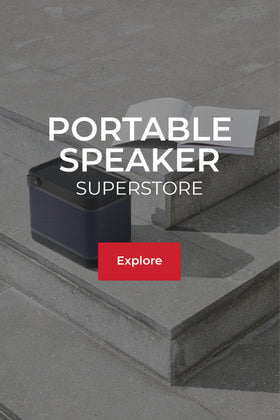
10 WAYS TO ACOUSTICALLY TREAT YOUR ROOM WITHOUT BREAKING THE BANK
1. READY MADE ACOUSTIC ABSORBERS
Acoustic absorbers work reasonably well in reducing mid and high-frequency sound waves only as they have a moderate amount of mass. They do not block noise entirely as they are less capable of insulating low-frequency sound waves which have long wavelengths.
Acoustic absorbers work by dampening and deadening soundwaves, thanks to the sound absorption materials that these panels are constructed from. These panels will help to eliminate both background noises and echoes by controlling ‘reverberation’, which is what happens when sound bounces off of walls.
Typically, you would choose the specific soundproof panel you want to buy based on how much sound you actually need to block out. For example, if you simply want to eliminate the sounds of birds chirping, then you would likely not need anything more than a standard, cheap acoustic absorbers. However, if you would like to reduce noise from a much louder source such as a garbage truck, you would need high quality, expensive acoustic absorbers, and possibly more heavy-duty options.
Using Foam for Absorption
Foam is not only cheap but effective, easy to install, and lightweight, which makes it easy for suppliers to ship it out. Although soundproof panels will not work as well as more expensive soundproofing options, they will certainly help to block out unwanted noise coming in and out of your room.
Conclusion
While acoustic absorbers are great products to help block out sound and reduce noise travel for your room, they will not be as effective as other soundproofing methods. If you have minimal soundproofing needs or don’t have a large budget, installing soundproof panels are certainly great options and will help.
If you need high-quality soundproof panels, find ones made from foam, preferably using the egg crate design, although wedge ridge panels are almost as good. If for whatever reason you cannot get panels made from foam, your next best option is perforated wood.
2. FIRST POINT OF REFLECTIONS GET PRIORITY
The first reflection point is the most discernible echo in a room; it is also the most disruptive. This reflection is the next sound you hear after the direct sound from the monitors or the loudspeakers. This reflection can confuse the listener because it adds extra information in the direction of the listener and makes it very difficult to distinguish the true sound projecting from the speakers because it adds unwanted clutter. It is only after you have eliminated this first reflection can you truly appreciate stereo imaging and soundstage and achieve a clean sound. After the first reflection has been removed you will appreciate increased definition, enhanced accuracy and better timing. The treatment of the first reflection point is vital in mixing rooms, listening rooms, home cinema rooms, editing suite or control room.
place acoustic panels for improving the sound in any room or environment once you have found the optimal listening position. This is a critical step in treating your room acoustically and is typically followed by treating the ceiling and corners, depending on what the room may need. The reason to treat your first reflection points is because this is where the sound from the speaker first comes into contact with a reflective surface and reaches your ear and creates comb filtering or smearing, because your brain “melds” the two sounds together, creating inaccuracies in what you hear. In this video, we describe the best way to find the first reflection points using the “mirror trick” with the help of a friend, a mirror, a marker, and 2′ x 4′ acoustic panels.
3. A RUG IN BETWEEN THE DISPLAY AND YOUR SEATING TAKES CARE OF FLOOR REFLECTIONS
Rugs absolutely help with soundproofing. They dampen vibrations, reducing sound transfer to some extent. They're a fashionable way to deflect noise and add value to rooms. Shoes, furniture, toys, and pet feet are quieter on rugs.
4. LINE THE WINDOWS WITH NEOPRENE RUBBER GASKETS
Neoprene acts as sound barrier because it doesn't breakdown in air. This synthetic rubber absorbs the acoustical vibration and acts as a barrier. It is just because of the high density property and regular consistency, the rubber is able to reduce the sound transfer through walls, doors or ceilings.
5. REMOVE THINGS WHICH VIBRATE
Objects that are present in the vicinity of the field of sound that shake or vibrate due to the low end frequencies of a subwoofer should be moved out of their existing place as to avoid a rattling sound that may disrupt one's listening experience and to help the installed, existing acoustic treatment perform in the best way they were intended to.
6. GET ISOLATOR FEET FOR YOUR SUBWOOFER
De-coupling a subwoofer from the floor results in inherently tighter and cleaner sounding bass. It’s also the next best thing to sound-proofing and ideal for carpeted rooms, hardwood floors or any space where room rattles, buzzes or vibrations are present.
Decoupling is making the interaction between a subwoofer and floor so weak that virtually no energy is transferred between them. The SVS SoundPath Subwoofer Isolation System features rigorously tested optimized durometer elastomer feet that significantly reduces the transmission of subwoofer energy through your floor and walls. This allows low frequency effects to be transferred through the air where they can be felt, resulting in tighter and cleaner sounding bass, no more distracting buzz or rattle from the room, and better sonic clarity and dynamics.
7. PLACE A DIFFUSER ON THE BACK WALL
Sound diffusers are designed to scatter or disperse sound waves, thereby reducing standing waves and echoes to improve sound clarity. Diffusers (or Diffusors) are typically used in critical listening environments like recording studios, control rooms, music production and live music rooms.
The back wall being one of the first points of contact and possibly the initial cause of unwanted reflections, gets a diffuser placed on it to reduce standing waves and echos to immediately improve the clarity of sound in a dedicated listening and viewing room.
8. CURTAINS
Heavy drapes are great for absorbing the excess sound in a room, but they won’t block noise from transferring in through a window or door. These thick drapes are great for a room where you might not have a lot of plush furniture or carpet and you’d like to get rid of any echo. The other benefits of heavy curtains is their ability to block light, so they’ll help keep a room cooler and darker.
Remember that “acoustic” or “heavy” drapes are really intended to absorb sound, and are not STC-rated. For sound-rated soundproof curtains, check out our catalog of products which will include our AcoustiTrac, AcousticCurtain and AcoustiDoor. These are the best options if you want to block noise from coming in through the windows or transferring between rooms.
9. DON’T PLACE THE SUBWOOFER IN THE CORNER
A subwoofer placed in the corner of a room may increase the subwoofer’s output – causing the sub to sound louder. Try placing your subwoofer in a corner and see how it sounds. However, depending on your floor space, a corner might not be a viable option for your subwoofer if it’s too far from your listening area.
Additionally, a sub’s close proximity to a flat wall can cause a harsh, rumbling, unpleasant sound. And if your subwoofer is a ported design (a subwoofer with an opening to allow airflow), you’ll want to keep it twice the diameter of the port (typically 6-12 inches) away from a wall to allow airflow out of the port.
10. IF YOU HAVE TWO SUBWOOFERS, INVERT THE PHASE OF ONE SUBWOOFER
The phase control in a powered subwoofer allows the user to add electrical delay to the incoming signal. The phase control operates over a range of 0 to 180 degrees. Adding delay to the subwoofer signal can sometimes help the subwoofer to integrate better with the loudspeakers in the room. Setting the phase control to 180 degrees reverses the polarity of the subwoofer. In some application where the subwoofer is placed on a wall opposite from the speakers, reversing the subwoofer polarity can yield better in-room low frequency response. When you reverse the polarity of a subwoofer, the subwoofer’s driver moves inward while all other speaker drivers in the system are moving outward.




